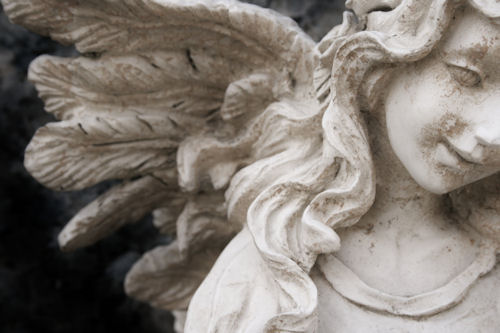 Puffy white satin folds and clumps like clouds around the two babies. Lying side-by-side in an open casket, ghost-gowns drape down their tiny bodies. Their heads appear to float. One baby is darker than the other. Both have blackened and hollow eyes like sunken shiners that won’t fade into the purplegreenyellow of the living. Time pales the photo’s blacks and grays, but not the dark skulls, the violence of their birth. Removed from its golden frame, the snapshot curls up at the edges like a scroll. Flattened, May 31, 1963 scrawls across the bottom.
Puffy white satin folds and clumps like clouds around the two babies. Lying side-by-side in an open casket, ghost-gowns drape down their tiny bodies. Their heads appear to float. One baby is darker than the other. Both have blackened and hollow eyes like sunken shiners that won’t fade into the purplegreenyellow of the living. Time pales the photo’s blacks and grays, but not the dark skulls, the violence of their birth. Removed from its golden frame, the snapshot curls up at the edges like a scroll. Flattened, May 31, 1963 scrawls across the bottom.
Grandma bought doll clothes at the Ben Franklin store for the tiny dead boys. The twins were too small for the clothes her daughter had purchased with her babysitting money. Before the funeral began, Grandma snapped the black-and-white photo with her instamatic camera. She had thought to tuck it inside her purse along with some chewing gum and an extra handkerchief. She was good at dealing with things like this, conjugating her sorrow into a list of daily tasks. Alone, she ruminated, forgetting to pray: how to love a mortified daughter that stiffened to the hugs she imagined giving. Witnessing the dead babies in the viewfinder, Grandma took two steps back, adding the curtain and floor lamp behind them into the shot. The babies did not look like little angels taken by God. They looked dead. The bulb clicked and singed the image three more times—just in case. This photo would be her seventeen-year-old daughter’s memory of the dead boys she never saw, the funeral she was too ill to attend, the funeral that might have also been hers, the shame her mother could never ease. Grandma’s daughter did not disappear into the dark white stillness of that photo.
Three weeks earlier, my mother had stood at the Class of 1963 graduation podium, the boys hidden beneath her red gown, a gold cord around her neck. She spoke to that small-town audience of burrowing eyes, relieved, for those ten minutes, to be the girl with straight As and perfect posture. The next week she married my father; the week after she laid on the blankets her mother had spread across the kitchen floor to sop up the blood that gushed from her young womb. No time for city ambulances to charge the family farm, the doctor arrived after the stillborn baby curdled beside her. He wrapped the dark red flesh in a towel and loaded my laboring mother and the unborn baby twin in the back seat of his car. My mother lived. Daniel Lynn was already dead. David Lee was born and died a day later. My mother’s tears halted into an unspeakable grief she would lug on her hip instead of the baby. The photo documented my mother’s shame—the good girl who got pregnant, the woman who could not give life.
I never knew the dead babies that came before me until I opened the gold-plated picture frame on Mom’s dresser. I was eight. Behind that photo of my uncle’s two dogs, two babies in box. Two dead babies who looked like tiny beat-up versions of me. We shared our father’s features and his absence. Lonely in my new family, the family I mostly watched now, a new father, a new name, a new brother who was theirs, and me, still tethered to my mother’s history of pain, her line-straight smile that worried me. I liked to look at that photo sometimes. With thoughts of how the undead live, my girl-mind imagined away the horror of those dead eyes. Two years older than me, the same age as my neighbor, those babies could be boys who played basketball, spit far, rode bicycles, told jokes, mowed yards, hugged Mom, flunked math, and kissed pretty girls. Boys who teased me. Boys who would punch anyone who dared to do the same.
—
Tammie M. Kennedy teaches writing, rhetoric, and film at University of Nebraska Omaha. Her work has appeared in Left Hand Waving, Journal of Lesbian Studies, Karamu Literary Journal, English Journal, and Rhetoric Review.
Photo by Tory M. Taylor
